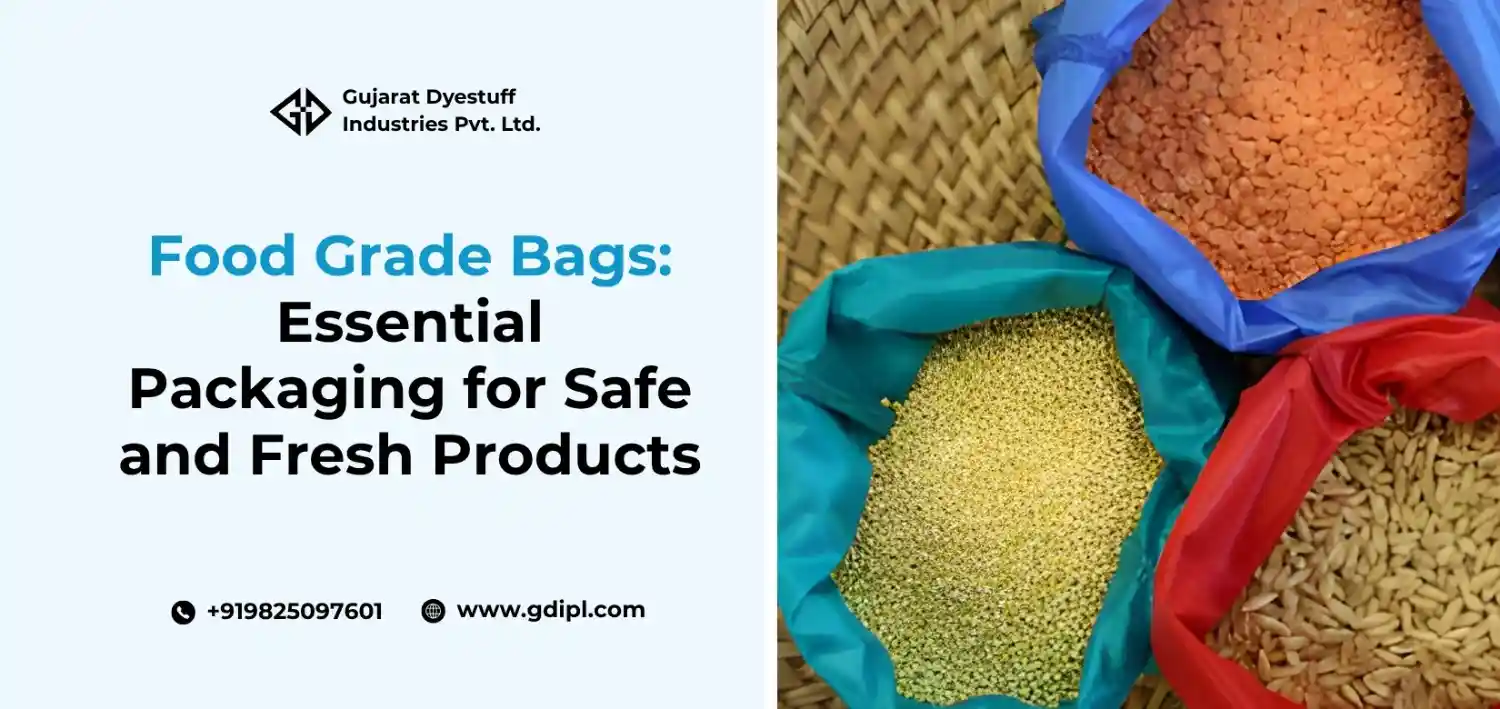Food Grade Bags – Essential Packaging for Safe and Fresh Products
April 8, 2025
Views : 2173

In the food industry, packaging plays a crucial role in ensuring the safety, quality, and freshness of products. One of the most important types of packaging used in food storage and transport is food grade bags. These bags are designed to meet the highest safety standards, providing a secure barrier against contaminants while maintaining the integrity of food products. In this blog, we will explore the features, benefits, and applications of food grade bags.
What Are Food Grade Bags?
Food grade bags are specifically designed bags made from materials that are safe for storing food products. These bags comply with various food safety regulations and standards, ensuring that the packaging does not pose any health risks. Made from high-quality plastic, polyethylene (PE), polypropylene (PP), or other food-safe materials, these bags are non-toxic, durable, and resistant to moisture, oils, and other contaminants.
Food grade bags are used to package a wide range of food items, from grains and fruits to frozen foods, meat, and dairy products. The materials used in these bags are free from harmful chemicals, ensuring that the food inside remains fresh, safe, and uncontaminated.
Why Are Food Grade Bags Important?
- Safety: Food grade bags are made from materials that do not leach harmful substances into the food, preventing contamination.
- Freshness Preservation: The bags help in preserving the freshness of food by providing an airtight seal that prevents moisture and oxygen from entering, thus extending shelf life.
- Compliance: Food grade bags meet strict safety regulations set by organizations like the FDA (Food and Drug Administration) and other food safety authorities.
- Convenience: These bags are easy to use, lightweight, and come in various sizes, making them ideal for both small-scale and large-scale food packaging needs.
- Versatility: Whether it’s for packaging dry, wet, or frozen food, food grade bags offer versatility in the food industry.
Types of Food Grade Bags
- Plastic Food Grade Bags: These are the most common type of food grade bags used in packaging. They are transparent, lightweight, and offer a high level of protection against contaminants.
- Vacuum Food Bags: These bags are used for vacuum sealing food, which helps extend shelf life by removing air from the bag. Vacuum-sealed food grade bags are commonly used for storing meat, cheese, and other perishable items.
- Freezer Bags: These are specially designed for freezing food items. They are made from durable materials that can withstand low temperatures, preventing freezer burn and maintaining the quality of the food.
- Multi-layered Food Bags: These bags have multiple layers that provide extra strength and protection, making them suitable for packaging bulk items like grains, flour, and sugar.
Benefits of Food Grade Bags
- Non-toxic: Food grade bags are free from harmful chemicals like BPA, phthalates, and other toxins, ensuring that the food remains safe for consumption.
- Hygienic and Clean: These bags are manufactured in hygienic conditions to prevent contamination during production and handling.
- Lightweight and Space-Efficient: Food grade bags are easy to store and transport, taking up minimal space while offering maximum protection for food items.
- Customizable: Food grade bags can be customized in size, thickness, and design to meet specific packaging needs, making them versatile for various food products.
- Sustainable Options: Eco-friendly food grade bags are now contributing to sustainability in food packaging. They offer excellent protection and strength, making them a preferred choice for bulk handling requirements.
Conclusion:
Food grade bags are essential in the food industry for ensuring the safety, quality, and longevity of food products. These bags are specifically designed to meet strict safety standards, using non-toxic, durable materials that safeguard against contaminants and preserve food freshness. Whether through plastic, vacuum-sealed, freezer, or multi-layered designs, food grade bags provide versatile packaging solutions for a wide range of food items, from dry goods to frozen foods.
Food-grade FIBC bags play a vital role in maintaining hygiene, extending shelf life, and meeting strict regulatory standards for safe food packaging. With increasing focus on sustainability, eco-friendly food-grade options are also becoming more widely adopted. At Gujarat Dyestuff Industries Pvt. Ltd., we provide reliable, high-quality food-grade bulk bags designed for safe and efficient storage and transport. For inquiries or tailored solutions, contact us today.
Frequently Asked Questions
A food grade bag is made from materials that meet food safety standards, ensuring that the packaging does not contain harmful chemicals or substances that can leach into the food.
Food grade bags are typically designed for single use, especially if they are used for packaging raw or perishable food. However, certain types of food grade bags, like freezer bags, may be reused for similar purposes.
Yes, food grade bags are safe for most food types, including dry, wet, frozen, and refrigerated food. The key is ensuring that the right type of bag is used for the specific food product.
Food grade bags provide an airtight seal that helps protect food from moisture, oxygen, and contaminants, which are key factors in preserving the food's freshness and extending its shelf life.
While traditional food grade bags are made from plastic, many manufacturers now offer eco-friendly options made from biodegradable or recyclable materials to promote sustainability.

